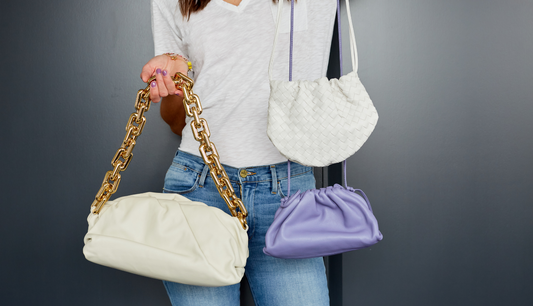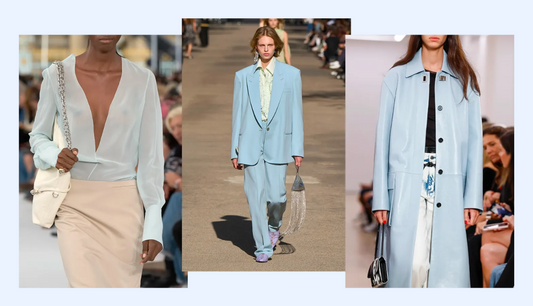Ode to Chanel
It was a winter wonderland to remember. Karl’s last show for Chanel was critiqued as ‘nearly flawless’ and we couldn’t agree more. Now that we’ve had time to process Karl’s passing, we wanted to honor him and the house he spent over three decades shepherding. Karl is known equally for his penchant for extravagant shows as he is for his uniform: a white stand collar shirt, black tailored suit, leather gloves, and sunglasses. But only the uber fashion fortunate really experienced the depth of his creative eye. Why is Chanel so coveted and is it really worth the price tag? Let us explain why we believe the answer is a resounding YES!!
The craftsmanship of Chanel is as important to the house as Karl remains. Chanel’s annual Métiers d’Art show is dedicated to honoring the fine craftsmanship of its artisan partners — several who operate under the corporate Chanel umbrella where not a single detail is overlooked, down to the button. Literally.
Let’s begin with George Desrues. He was a jewelry maker and accessories designer who founded his company in 1936. Thirty years after founding his company he made his first buttons for Gabrielle (Coco) Chanel and after 20 years in business together he turned his business over to Chanel. Roughly 100 artisans still work for the company, maintaining his high level of precision and artistry.
The camellia flower, synonymous with Chanel, was Coco’s favorite flower and it's used on everything from jewelry to packaging. Parisian fashion institution, Lemarié, gets all the credit for creating Chanel’s camellia flower. Before being known for their intricate flower designs, crafted from tulle, organza, and velvet, the company had been the feather provider to France’s top fashion houses. In 1996 the company became an official Metiers d’Arts partner.
Those cap toe mid heels that are comfortable and instantly make any look fashun were designed by Raymond Massaro. He was the grandson of master bookmaker Massaro who started his namesake company in 1894. In 2002 Massaro joined the Chanel family and Metiers d’Arts and continues to make the shoes that walk down each Chanel runway.
In 1924 the Lesage family took over an embroidery studio and now has one of the worlds largest collections of finely embroidered pieces made for the highest couture houses. They joined Chanel in 2002 to preserve and continue their craft.
It only took three years of being a company for Goossens to get on Gabrielle’s radar, and has been crafting Chanel jewelry since 1953. Now Goossens is run by the families second generation, but they still provide semi-precious stones, pearls and gold covered bronze for Chanel.
At Chanel it’s all in the details, including the hats and hair accessories. Maison Michel was one of the first artisans to partner with Chanel in 1997. The company originally started in 1936 and gained recognition among French houses in the 1970s when taken over by Pierre and Claudine Debard who sparked a whole new generation of milliners.
There are so many floral details quietly happening, that it takes more than Lemarie to bring them to life. Enter Guillet, Master corsage-maker since 1896. Guillet re-imagines daisies, jasmine, and lily-of-the-valley as hairpieces, tiaras and crowns and have been a Chanel Metiers d’Arts house since 2006.
Montex has been specializing in tambour, a style of embroidery since 1939. With this type of embroidery a hooked needle is used to thread beads and sequin onto single chain stitches after the fabric has been pre-pierced with a cornely.
Gloves aren’t just for keeping hands warm, they can also be an essential couture piece according to Causse, who has been making them with this vision since 1892. They are decorated by hand using the finest leathers and often embellished with precious stones and lace. This glove maker has been a part of the House since 2012.
Barrie Knitware has a fascinating story. The company began in the 1870s and became known for making sweaters for British soldiers but wasn't recognized by the large fashion houses until the 1950s. Chanel saw so much promise in Barrie they purchased the company in 2012. To honor the history and craft, Karl held the Metier show that year in Edinburgh.
Are you amazed by a perfect pleat like we are? Gerard Lognon has been perfecting the pleat since 1949 using a unique process that combines handcrafting with work in cardboard and steamsetting. Still directing the company, Lognon partners with Chanel in 2013.
Despite being the mastermind behind Chanel, Karl was never one to take full credit for his work at Chanel and these 11 companies are the reason why. He saw true talent in others and embraced it. He understood he could never recreate the expertise these vendors have been perfecting for decades so instead he invited them to join the process. Together they were able to create a near perfect product. It is a lifetime of specializing in such detail that proves that a good company is not the whole but the sum of its parts. And that is why Chanel is in a league of it’s own.
You may also enjoy
-
 Read More
Read MoreDon’t Sell, Just Swap…or Rent?
Clothing swaps aren’t a new concept. If you had a sibling growing up, you probably have closet-sharing in your veins. However, the concept of swapping clothes has evolved into a...
-
 Read More
Read MoreOver Florals? Rent These 5 Prints Instead.
Is wearing florals in the spring becoming a fashion faux pas? That’s to be debated, but here's the scoop: according to @databutmakeitfashion, floral fashion has decreased by 15% this month,...
-
 Read More
Read MoreIcy Blue: Spring’s Coolest Shade to Rent
With a new season comes a new color palette. While we say goodbye to winter, one of its ethereal shades remains—icy blue. This latest addition to the minimalist palette exudes...




